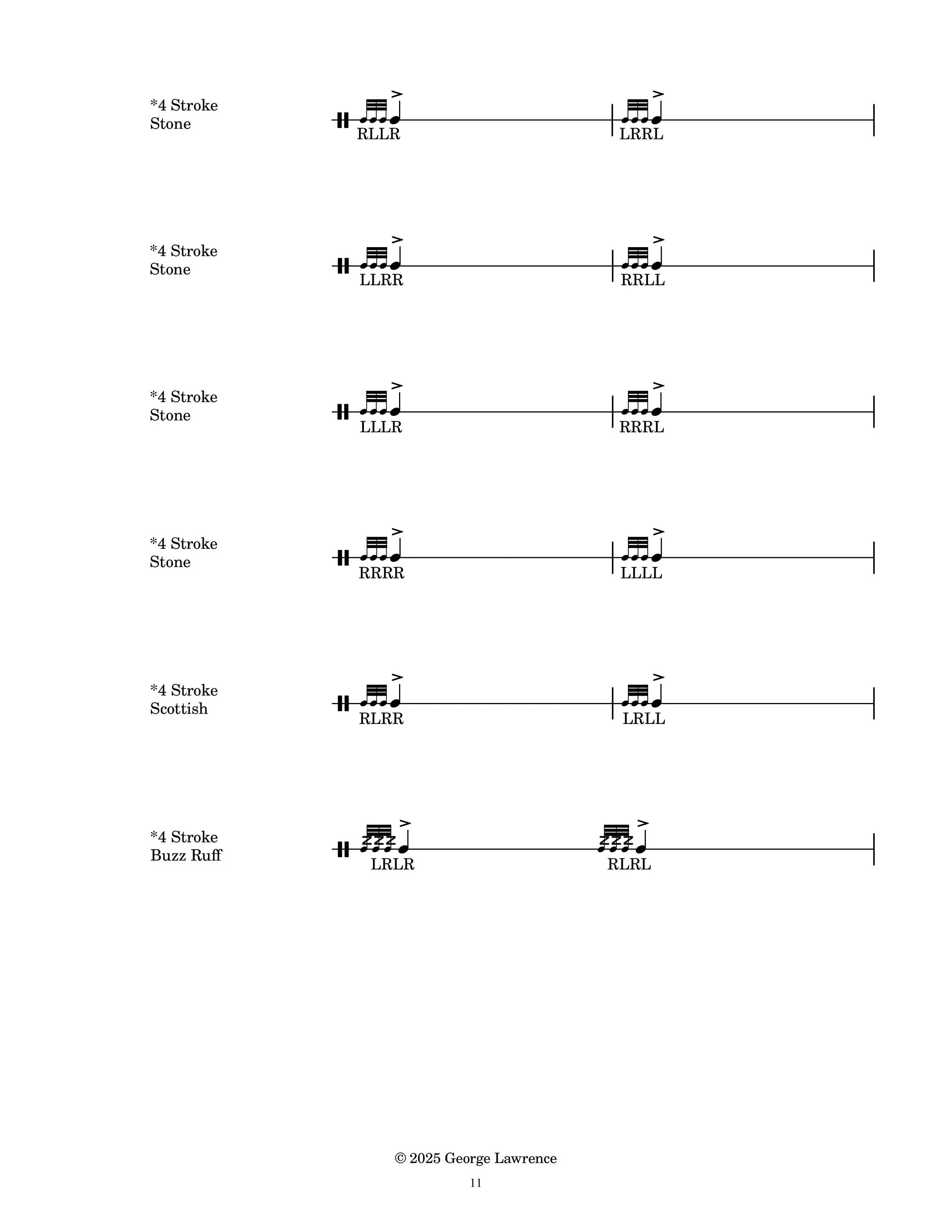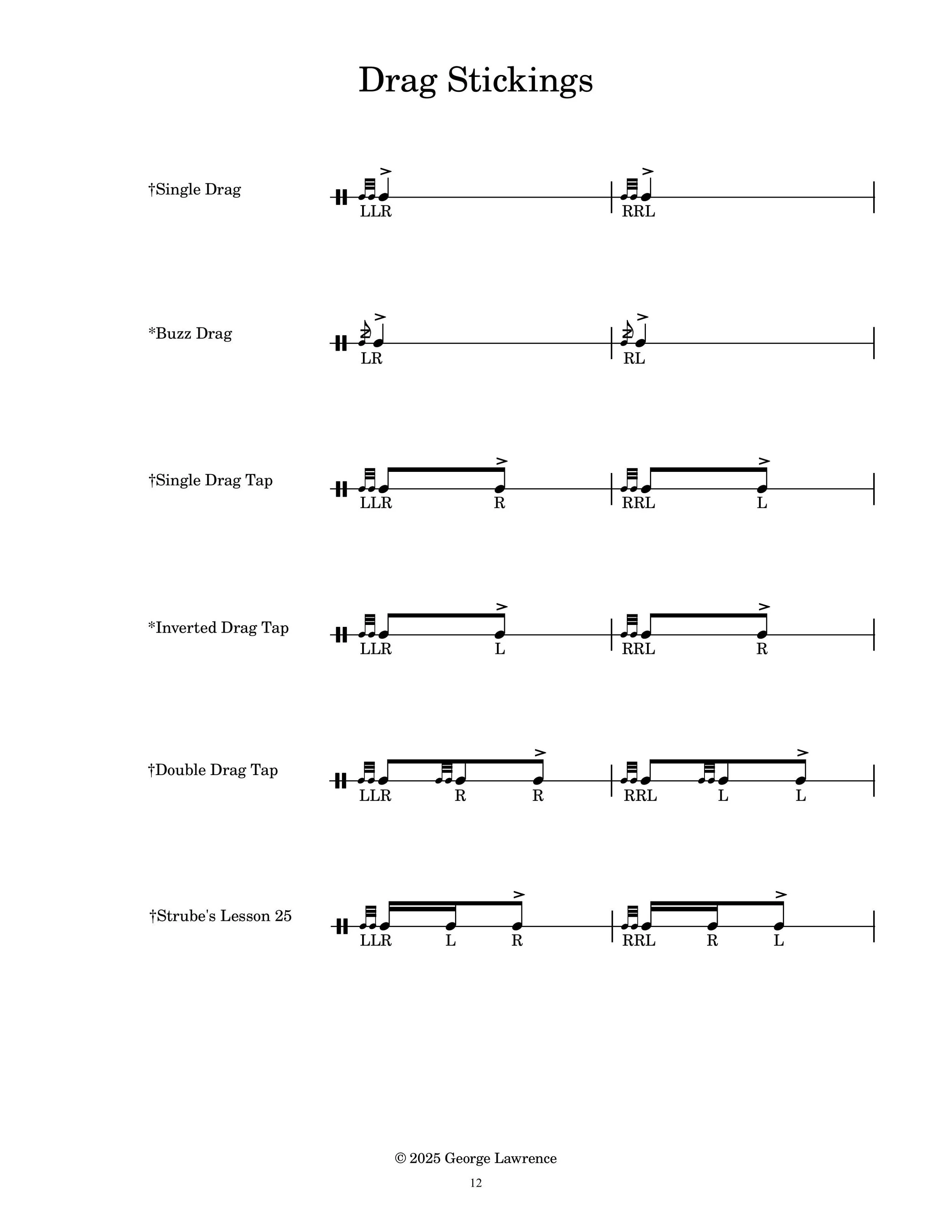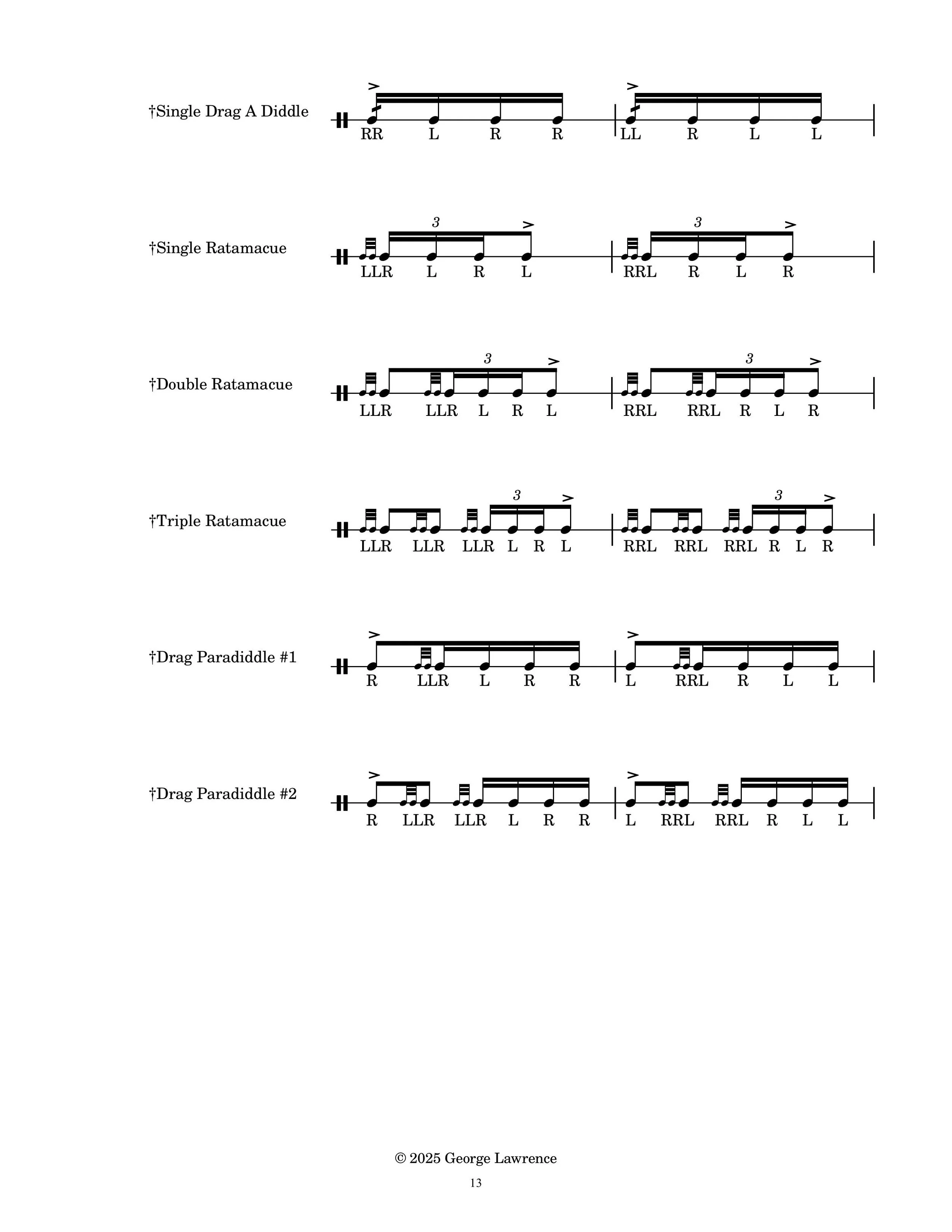See images of the stickings below
From my latest book, “The Missing Rudiments”.
(downloadable and printable pdf on sale at the NSMD store. For print copies email George@notsomoderndrummer.com)
There has been a major point of confusion in American drumming over the definitions and stickings of ruffs and drags. Most of these debates are among academics and rudimental experts, and even legendary drum set drummers, mostly stemming from their preferences of historical rudimental systems and conflicting rudimental instruction books. The drag has always had only double stroke grace notes in front of a tap in every tradition. But the ruff has had many different stickings in different traditions, including the double stroke grace notes of the drag. Another conundrum, no pun intended, has been calling the drag a “drag ruff”. So the sticking and naming of these two rudiments has been not standardized for hundreds of years.
The current modern majority opinion is that, since they can’t both be and are not the same thing, a drag has double stroke grace notes and most ruffs have single stroke grace notes. I agree with that majority in keeping it simple but with the caveat that there are other known stickings for ruffs by historically important authors, which are included in this book. So,“ruff is ruff, drag is drag, and never the twain shall meet.”
The 4 stroke ruff was in the first PAS 1984 publication but dropped very soon after. It was grouped in the single stroke stroke roll rudiments and titled with two names, “single stroke four (four stroke ruff)” - yes, in parentheses like a red-headed step child. It was not notated with grace notes but rather as a 16th triplet and tap. I have differentiated between the single stroke four which is NOT a grace note rudiment and the four stroke ruff which IS a grace note rudiment.
The most convincing argument for the inclusion and definition of the 4 stroke ruff comes from foremost rudimental researcher, Ryan Alexander Bloom:
“With the 4 stroke ruff appearing early and often over a large geographic area, and with a multitude of names and sticking forms, it is fairly safe to say that it is probably one of the most basal or foundational rudiments in drum history. Its failure to appear verbatim on major official rudiment lists in the USA is odd and possibly one of the greatest rudimental oversights of the past 100 years. The 4 stroke ruff appeared in at least seven American snare methods in the 20 years immediately preceding the founding of NARD in 1933: Rominger 1932, military manual TM 2000-5 1928, Moeller 1925, Army Manual No. 6 1922, Gardner 1918 and 1919, and Safranek 1916. It would seem that every teacher of the era would have been aware of it, and only three books that I have seen in this same 20 year span do not feature it. One of these is the Noble and Cooley EZ Method, which only includes ten rudiments. Another is the Ludwig Drum and Bugle Manual, which includes just seven rudiments. The manuals that do include a 4 stroke ruff list between 19 and 34 rudiments in total, meaning the few that fail to teach it are also leaving out many other standard selections of the era, and are clearly not meant to be comprehensive methods.
After the foundation of NARD, but prior to the compilation of the PAS 40 (which largely happened around 1981), the 4 stroke ruff appeared in at least 14 books: Yoder 1935, Krupa 1938 and 1944, Rollinson 1934, Field Music Technical Manual 1940, Wilcoxon 1941 and 1944, Buggert 1941 and 1960, Ludwig 1942, Rich 1942, Reynolds 1943, Sturtze 1955, and Morello 1967. My collection becomes a bit thin between the 1960s and 1990s. These authors all would have known precisely what was included on the NARD 26 and chose to augment their books with up to 10 additional rudiments, including the 4 stroke ruff. Of course, there were also many, many books in this time period that did not teach the 4 stroke ruff, but the names on this list include some very heavy hitters. Charlie Wilcoxon, Buddy Rich, Gene Krupa, Earl Sturtze, and Joe Morello are very hard to argue with. If you don’t agree with something they all have in common, especially when they come from both the rudimental/marching and jazz drum kit sides of drumming, you are probably just wrong.
I acknowledge that the single stroke 4 is very similar to the 4 stroke ruff, but I personally feel as though we would all be better served by either adding a grace note version to the common PAS sheet, or replacing it entirely with a clear 4 stroke ruff with grace notes, or perhaps just showing the non-grace-note version landing on a down beat instead of on “and” or the upbeat. Anything to indicate the classic ruff phrasing would be better. It would seem that 350 years of written Anglo-American history are on my side, but nobody asked me.”
Below are the stickings of ruff and drag rudiments/stickings in the “Missing Rudiments” book which is an ongoing research project in its first edition/first draft stage. Email any suggestions, corrections, arguments, or praise to george@notsomoderndrummer.com, not in the comments section. I invite the controversy that will ensue, but please read the whole book before you step up to the debate podium. -George Lawrence





